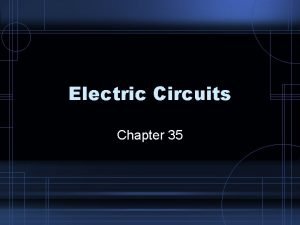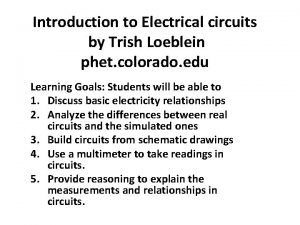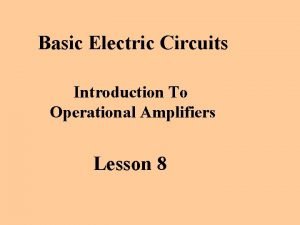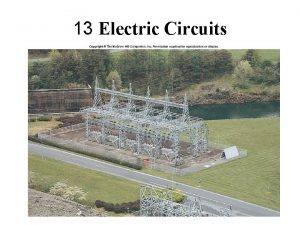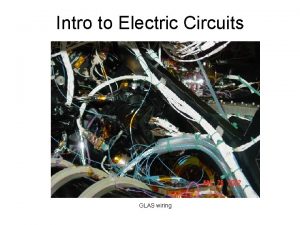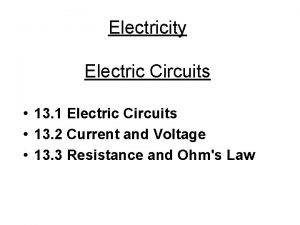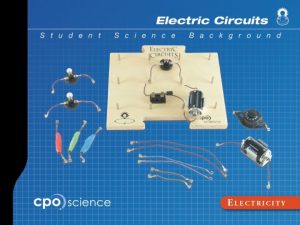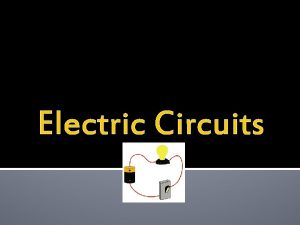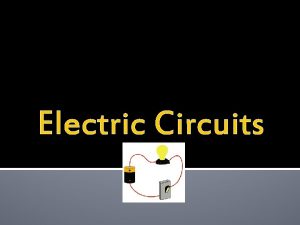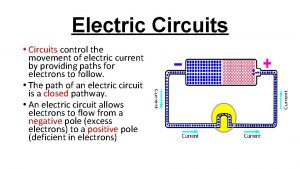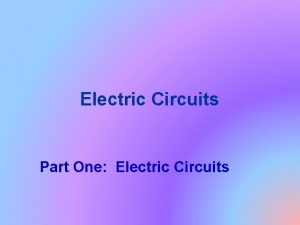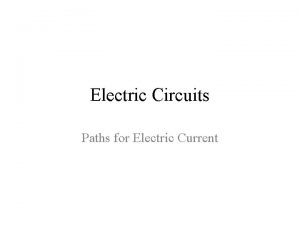13 Electric Circuits Chapter Outline 1 Electric Circuits

















- Slides: 17

13 Electric Circuits

Chapter Outline 1 Electric Circuits and Electric Current 2 Ohm’s Law and Resistance 3 Series and Parallel Circuits 4 Electric Energy and Power 5 Alternating currents and Household Current Everyday Phenomenon: The Hidden Switch in Your Toaster

How to Get the Bulb to Light?

How to Get the Bulb to Light?

Electric Current The electric current is the amount of charge per unit time that passes through a surface that is perpendicular to the motion of the charges. The SI unit of electric current is the ampere (A), after the French mathematician André Ampére (1775 -1836). 1 A = 1 C/s. Ampere is a large unit for current. In practice milliampere (m. A) and microampere (μA) are used.

Direction of Current Flow Electric current is a flow of electrons. In a circuit, electrons actually flow through the metal wires. Conventional electric current is defined using the flow of positive charges. It is customary to use a conventional current I in the opposite direction to the electron flow.

Direction of Current Flow

What Limits the Flow of Current?

What Limits the Flow of Current? A: Resistance

Electric Current Is Analogous to Water Flow

Ohm’s Law Georg Simon Ohm (1787 -1854), a German physicist, discovered Ohm’s law in 1826. This is an experimental law, valid for both alternating current (ac) and direct current (dc) circuits. When you pass an electric current (I) through a resistance (R) there will be a potential difference or voltage (V) created across the resistance. Ohm’s law gives a relationship between the voltage (V), current (I), and resistance (R) as follows: V=IR

What Is the Current?

Electromotive Force (emf) The energy needed to run electrical devices comes from batteries. Within a battery, a chemical reaction occurs that transfers electrons from one terminal (leaving it positively charged) to another terminal (leaving it negatively charged). Because of the positive and negative charges on the battery terminals, an electric potential difference exists between them. The maximum potential difference is called the electromotive force* (emf) of the battery. The electric potential difference is also known as the voltage, V. The SI unit for voltage is the volt, after Alessandro Volta (17451827) who invented the electric battery. 1 volt = 1 J/C.

Circuits

Series Circuit

Parallel Circuit

Try This Box 13. 2
 Electric charges and electric forces lesson outline
Electric charges and electric forces lesson outline Fundamentals of electric circuits chapter 4 solutions
Fundamentals of electric circuits chapter 4 solutions Electric current
Electric current Chapter 35 electric circuits
Chapter 35 electric circuits Chapter 20 electric circuits
Chapter 20 electric circuits The circuit chapter 9
The circuit chapter 9 Fundamentals of electric circuits chapter 7 solutions
Fundamentals of electric circuits chapter 7 solutions Chapter 35 electric circuits answers
Chapter 35 electric circuits answers Ohm's law calculations worksheet
Ohm's law calculations worksheet Chapter 35 electric circuits
Chapter 35 electric circuits Advantages of parallel circuit over series circuit
Advantages of parallel circuit over series circuit Chapter 21 electric charge and electric field
Chapter 21 electric charge and electric field Chapter 21 electric charge and electric field
Chapter 21 electric charge and electric field K constant unit
K constant unit Units of a charge
Units of a charge Lesson outline lesson 3 describing circuits answers
Lesson outline lesson 3 describing circuits answers Phet circuit
Phet circuit Electric circuits equations
Electric circuits equations









